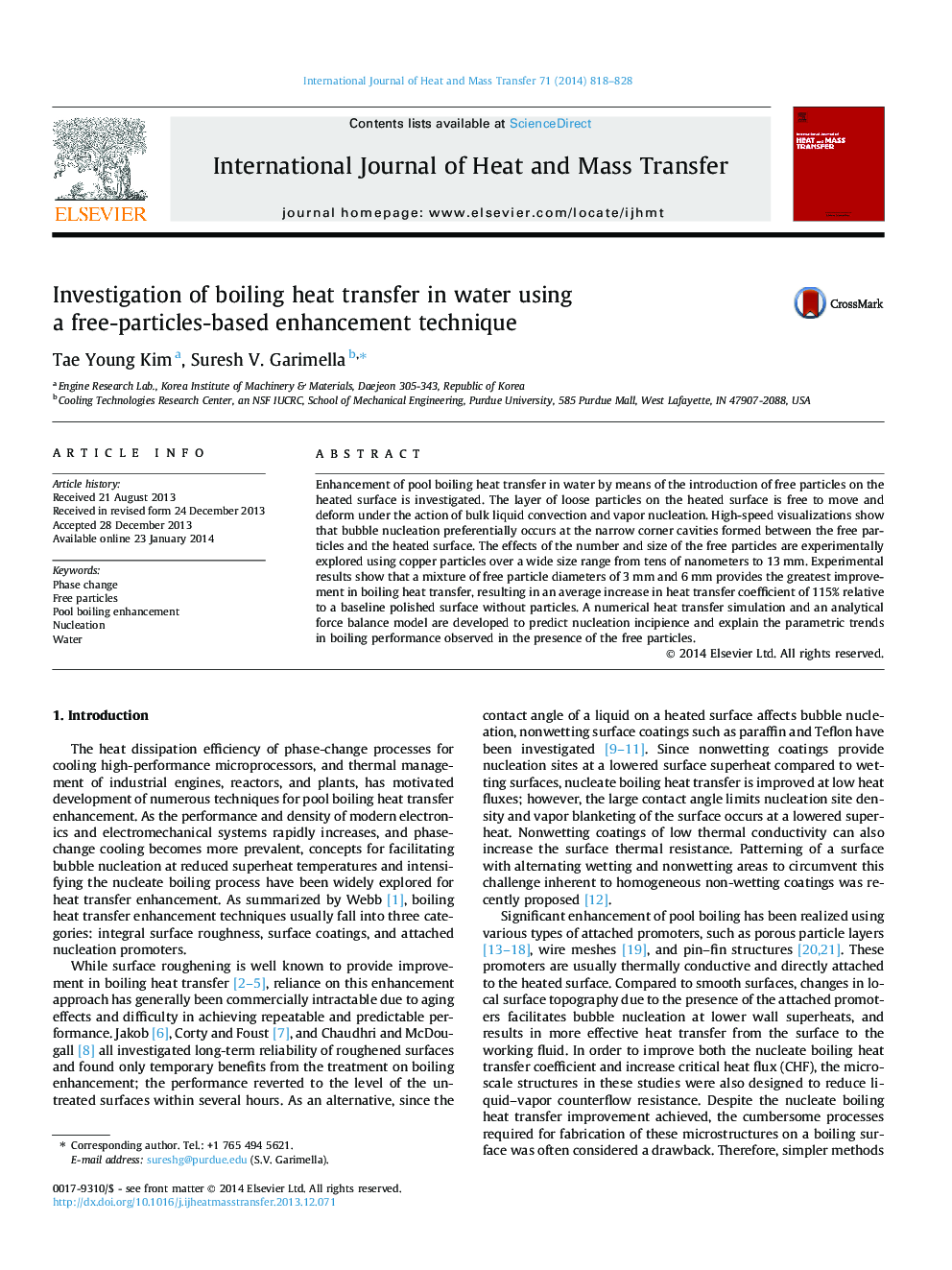| Article ID | Journal | Published Year | Pages | File Type |
|---|---|---|---|---|
| 7057809 | International Journal of Heat and Mass Transfer | 2014 | 11 Pages |
Abstract
Enhancement of pool boiling heat transfer in water by means of the introduction of free particles on the heated surface is investigated. The layer of loose particles on the heated surface is free to move and deform under the action of bulk liquid convection and vapor nucleation. High-speed visualizations show that bubble nucleation preferentially occurs at the narrow corner cavities formed between the free particles and the heated surface. The effects of the number and size of the free particles are experimentally explored using copper particles over a wide size range from tens of nanometers to 13Â mm. Experimental results show that a mixture of free particle diameters of 3Â mm and 6Â mm provides the greatest improvement in boiling heat transfer, resulting in an average increase in heat transfer coefficient of 115% relative to a baseline polished surface without particles. A numerical heat transfer simulation and an analytical force balance model are developed to predict nucleation incipience and explain the parametric trends in boiling performance observed in the presence of the free particles.
Related Topics
Physical Sciences and Engineering
Chemical Engineering
Fluid Flow and Transfer Processes
Authors
Tae Young Kim, Suresh V. Garimella,
